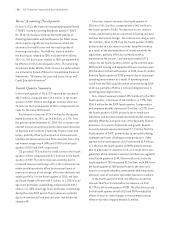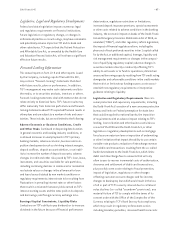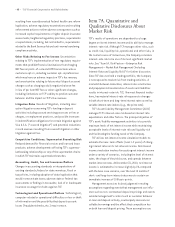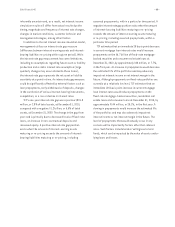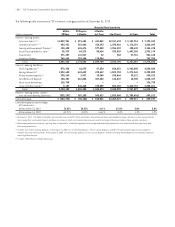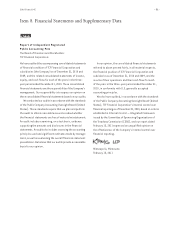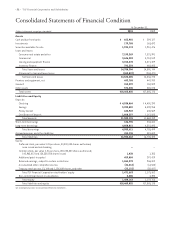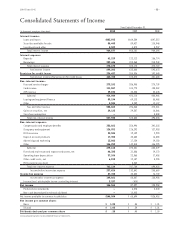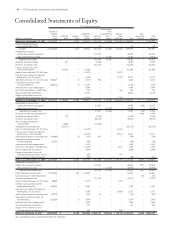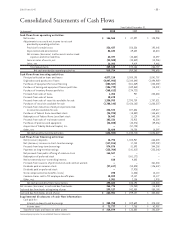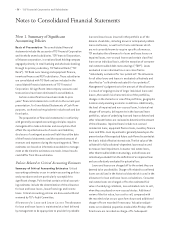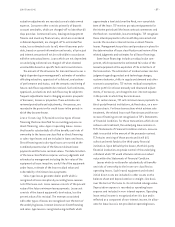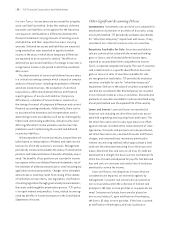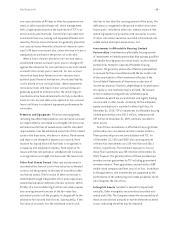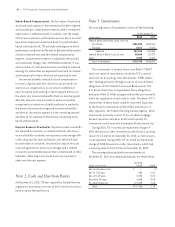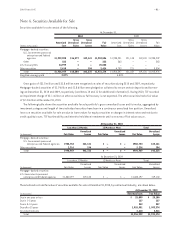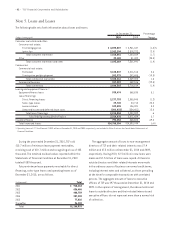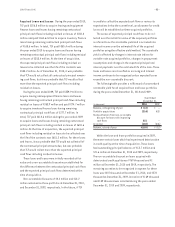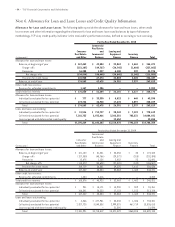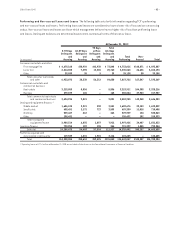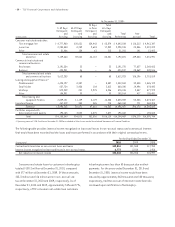TCF Bank 2010 Annual Report Download - page 72
Download and view the complete annual report
Please find page 72 of the 2010 TCF Bank annual report below. You can navigate through the pages in the report by either clicking on the pages listed below, or by using the keyword search tool below to find specific information within the annual report.• 56 • TCF Financial Corporation and Subsidiaries
Note 1. Summary of Significant
Accounting Policies
Basis of Presentation The consolidated financial
statements include the accounts of TCF Financial Corporation
and its wholly owned subsidiaries. TCF Financial Corporation,
a Delaware corporation, is a national bank holding company
engaged primarily in retail banking and wholesale banking
through its primary subsidiary, TCF National Bank (“TCF
Bank”). TCF Bank owns leasing and equipment finance,
inventory finance and REIT subsidiaries. These subsidiaries
are consolidated with TCF Bank and are included in the
consolidated financial statements of TCF Financial
Corporation. All significant intercompany accounts and
transactions have been eliminated in consolidation.
Certain reclassifications have been made to prior
years’ financial statements to conform to the current year
presentation. For Consolidated Statements of Cash Flows
purposes, cash and cash equivalents include cash and due
from banks.
The preparation of financial statements in conformity
with generally accepted accounting principles requires
management to make estimates and assumptions that
affect the reported amounts of assets and liabilities,
disclosure of contingent assets and liabilities at the date
of the financial statements and the reported amount of
revenues and expenses during the reporting period. These
estimates are based on information available to manage-
ment at the time the estimates are made. Actual results
could differ from those estimates.
Policies Related to Critical Accounting Estimates
Summary of Critical Accounting Estimates Critical
accounting estimates occur in certain accounting policies
and procedures and are particularly susceptible to
significant change. Policies that contain critical account-
ing estimates include the determination of the allowance
for loan and lease losses, lease financings and income
taxes. Critical accounting policies are discussed with and
reviewed by TCF’s Audit Committee.
Allowance for Loan and Lease Losses The allowance
for loan and lease losses is maintained at a level believed
by management to be appropriate to provide for probable
loan and lease losses incurred in the portfolio as of the
balance sheet date, including known or anticipated problem
loans and leases, as well as for loans and leases which
are not currently known to require specific allowances.
TCF evaluates the allowance for loans and lease losses on
impaired loans, non-accrual leases and certain classified
loans on an individual basis, with the exception of consumer
real estate troubled debt restructurings (“TDR”). Loans
evaluated on an individual basis are classified as
“individually evaluated for loss potential”. The allowance
for all other loans and leases is evaluated collectively and
classified as “collectively evaluated for loss potential”.
Management’s judgment as to the amount of the allowance
is a result of ongoing review of larger individual loans and
leases, the overall risk characteristics of the portfolios,
changes in the character or size of the portfolios, geographic
location and prevailing economic conditions. Additionally,
the level of impaired and non-accrual loans, historical net
charge-off amounts, delinquencies in the loan and lease
portfolios, values of underlying loan and lease collateral and
other relevant factors are reviewed to determine the amount
of the allowance. Impaired loans include non-accrual
commercial loans, equipment finance loans, inventory finance
loans and TDRs. Loan impairment is generally based upon the
present value of the expected future cash flows discounted at
the loan’s initial effective interest rate. The fair value of the
collateral for fully collateral-dependent loans may be used
to measure loan impairment. Consumer real estate loans,
other than troubled debt restructurings, and all leases are
collectively excluded from the definition of an impaired loan
and are collectively evaluated for potential loss.
Loans and leases are charged off to the extent they are
deemed to be uncollectible. Charge-offs related to confirmed
losses are utilized in the historical data which is used in the
allowance for loan and lease losses calculations. Consumer
real estate loans are charged-off to the estimated fair
value of underlying collateral, less estimated costs to sell,
when they are placed on non-accrual status. Additional
review of the fair value, less cost to sell, compared with
the recorded value occurs upon foreclosure and additional
charge-offs are recorded if necessary. Valuation adjust-
ments on residential properties made within 90 days after
foreclosure are recorded as charge-offs. Subsequent
Notes to Consolidated Financial Statements


